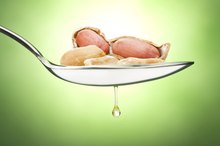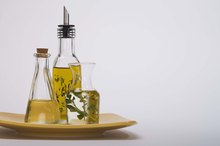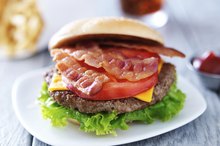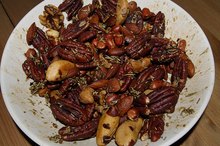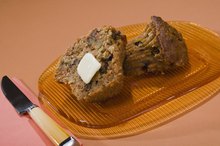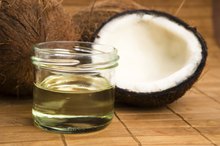Fat in Indian Foods
Fat is an important component of diet, imparting palatability to the diet and serving various functions in the body. Fats carry fat-soluble vitamins; vitamin A, D, E, and K. They also provide essential fatty acids, which cannot be synthesized by the body and therefore must be supplied from food. Fats are high source of energy, as each gram of fat provides 9.3 calories, which is more than twice the energy furnished by either protein or carbohydrate. Most of the fat in Indian foods comes from deep-frying, especially Indian snacks and sweets. Some curries made from meat, chicken or paneer may also have rich amounts of added cream and butter. The main sources of fat in Indian diets are vegetable oils, ghee and occasional use of vanaspati/ hydrogenated oil and butter.
Types of Fat
Fat in the diet can be of two kinds, visible fat, and invisible fat. The visible fat are those derived from vegetable sources like vegetable oils, nuts, and seed oil, hydrogenated vegetable oils, and from animal sources like butter and ghee. Most of the fats from animal sources are saturated fats. Animal fats are source of vitamin A and D, which are not in vegetable oils. They also contain a fair amount of cholesterol; therefore, use them rationally. Vegetable oils, on the other hand, are unsaturated oils with the exception of coconut oil and palm oil. These oils contain vitamin E, which protects the oil from oxidation.
Plant Sources
What Are Visible Fats?
Learn More
All oils obtained from edible nuts and oil seeds such as peanut, sesame, soybean, mustard, safflower, sunflower, corn, coconut, palm, and almond are sources of visible fat. Hydrogenated vegetable oil, or vanaspati, is a source of trans fat in Indian cooking. Cereals, pulses, fruits, and vegetables are poor sources of fats. However since cereals and legumes are consumed in large quantities, they contribute to the invisible fat in the diet. Fats derived from vegetable sources provide essential fatty acids, which have vitamin-like functions in the body. A cereal-pulse based diet not containing any added visible fat can meet more than 50 percent of your essential fatty acid requirement. Most Indian snacks, such as bhajia, pakodas, farsan, and the world-favorite samosas, are all deep fried foods made with vegetable oils. Bakery products such as cakes, pastries, cream biscuits, khari biscuit, suji toast and Indian 'Pav' bread, are made with margarine or vanaspati. Poppadum/papad, Indian breads such as puri or bhatura served at Indian restaurants, are also fried foods with high fat content.
Animal Sources
Whole milk, poultry, eggs, red meat, lard, pork, oily fish like sardines, shellfish, and dairy products such as butter and ghee, are rich sources of dietary fat. Chicken is lower in fat content than organ meats and red meat. However, certain chicken preparations, such as "butter chicken," may contain a lot of butter and cream to provide for the rich and creamy flavor. In addition, fried fish curries and paneer dishes -- Indian cheese made with whole milk -- Indian sweets like rice pudding, barfi and rabdi, made from concentrated milk, are high in saturated fats and calories.
Daily Recommendations
Foods to Avoid If You Have High Triglycerides & High Cholesterol
Learn More
Indian diets contain 10 to 15 g invisible fat, which comes from cereals, pulses, eggs, meat, milk, and curd .This with the 15 to 25 g of visible fat amount that would meet essential fatty acid requirement for all ages, and would provide for absorption of fat-soluble vitamins. To avoid the undesirable effects of excess fat, visible fats in the diet, such as ghee, butter, or oil, should be less than 50 g per day.
Related Articles
References
- ''A Textbook of Foods, Nutrition & Dietetics''; M.Raheena Begum; 2008
- ''Nutritive Value of Indian foods''; C.Gopalan, B.V. Ramasastri, S.C. Balasubramanian; 2002
Writer Bio
Shweta Singh is a dietitian who started writing articles in topics of health and nutrition in 2010. She has over five years of work experience in the dietetic field and holds a Doctor of Medicine in alternative medicine, with specialization in Vitamin therapy, yoga and magnet therapy.


